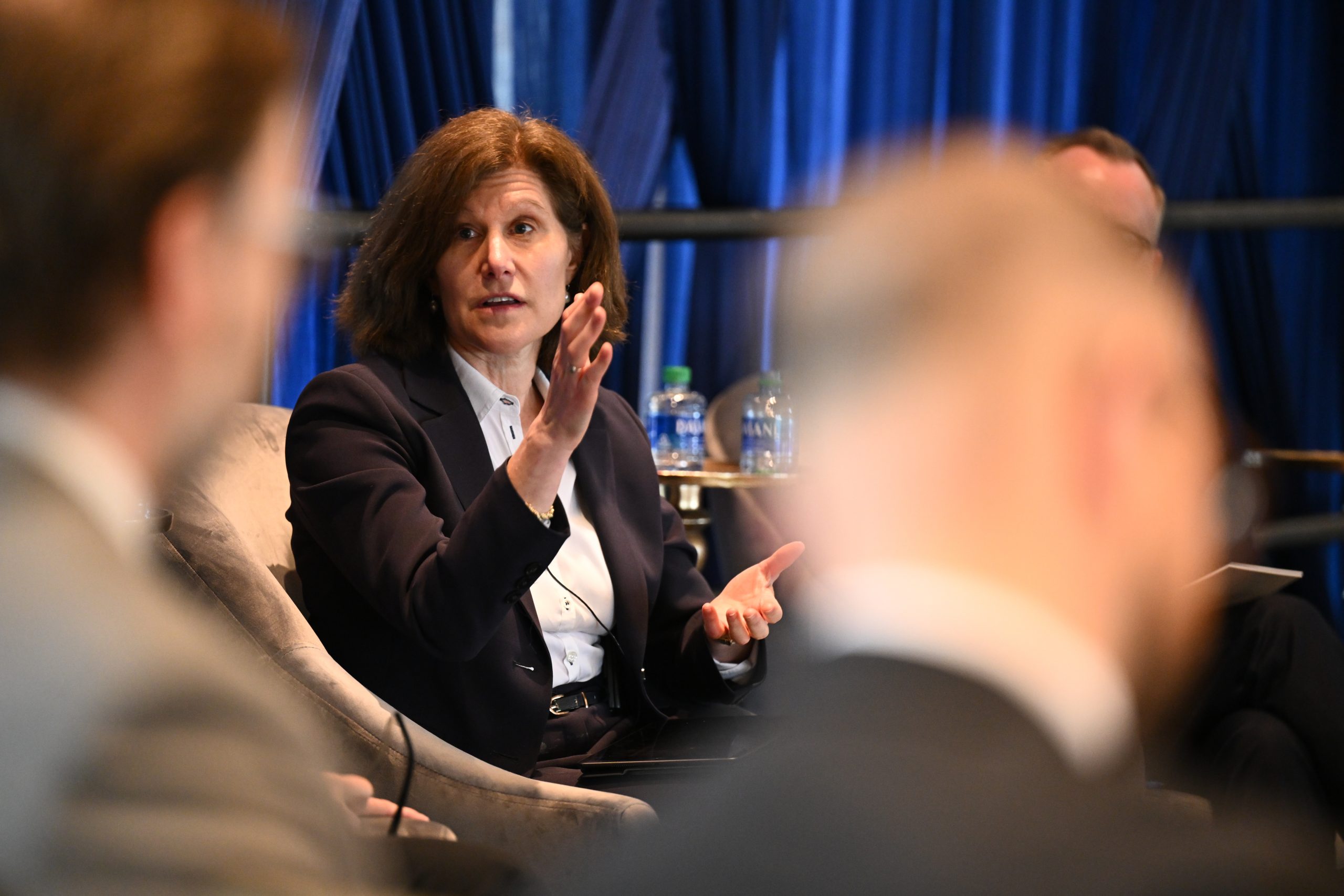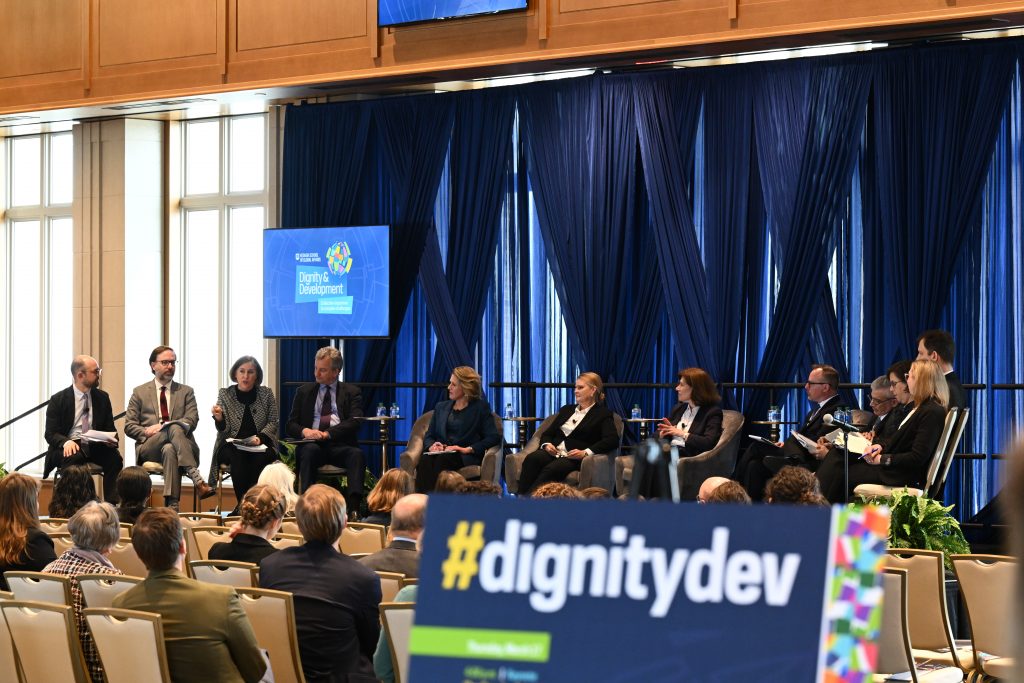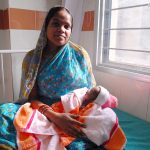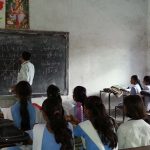How can the United States reimagine preventing violent extremism in some of the world’s most vulnerable communities? How might key government agencies work with each other and with top peacebuilders and civil society leaders across the world to make this vision a reality?
Top officials from the Biden administration, conflict prevention advocacy organizations, and Washington think tanks outlined a new paradigm for US foreign policy in fragile states during a March 18 conversation at the Keough School’s Dignity and Development Forum.
Their discussion explored the Global Fragility Act of 2019 (GFA), a bipartisan measure aimed at overhauling the US government’s approach to addressing violent extremism by coordinating the work of key agencies.
The panel featured Anne A. Witkowsky, assistant secretary for the Bureau of Conflict and Stabilization Operations at the Department of State; Robert Jenkins, assistant to the administrator for the Bureau for Conflict Prevention and Stabilization at USAID; James Saenz, deputy assistant secretary of defense for counternarcotics and stabilization policy for the Department of Defense; and Lise Grande, president of the United States Institute of Peace. Maura Policelli, executive director of the Keough School Washington Office, moderated the discussion.
The conversation also incorporated insights from several peacebuilding and conflict prevention policy experts who directly advise the US government on policy matters, including:
- Paul B. Stares, General John W. Vessey Senior Fellow for Conflict Prevention and director of the Center for Preventive Action at the Council on Foreign Relations;
- Josefina Echavarría Alvarez, associate professor of the practice for the Keough School of Global Affairs and director of its Kroc Institute for International Peace Studies’ Peace Accords Matrix;
- Annie Pforzheimer, senior fellow at the Center for Strategic and International Studies;
- Ryan Sheely, director of governance and conflict research for Mercy Corps;
- Lisa Schirch, Richard G. Starmann, Sr. Professor of the Practice in Peace Studies at the Keough School’s Kroc Institute;
- Paul Turner, president and executive director at the Fund for Peace; and,
- Erol Yayboke, director and senior fellow for the Project on Fragility and Mobility at the Center for Strategic and International Studies
The discussion built on the Keough School’s earlier research and discussion to help address global fragility, including policy reports on strategic monitoring in fragile states and the role of religious engagement in implementing the GFA as well as a 2019 public forum on global fragility at the Keough School Washington Office.

A push to innovate
The conversation came at a crucial juncture. It marked the first time that leaders from the Department of State, Department of Defense, and USAID—the US government agencies charged with implementing the new approach—had met publicly to discuss it, and ahead of the Biden administration’s forthcoming announcement of strategies for five priority countries and regions.
“There is absolutely significant commitment to implementing this landmark bipartisan law,” Witkowsky said. “I think it is notable that not only was the law bipartisan, not only was USIP a driver behind the law, but there are a number of civil society groups who were very instrumental in formulating the law.”
Grande noted that the GFA emerged from strategic task force conversations that considered key issues.
“They were looking at two interrelated sets of problems,” she recalled. “How do you stop the spread of extremism—what kinds of policies are needed? And . . . how does the US government do better in addressing them?”
The answer to the second question came in the form of three recommendations, which she noted the GFA has incorporated—a coordinated, whole-of-government approach, a focus on prevention, and shared investments for peace.
As we’re driven to coordinate together and work together, we can get to a synchronization.
Saenz hailed the importance of coordination, which he acknowledged had been lacking in past stabilization efforts, when agencies pursuing specific goals sometimes found themselves working at cross-purposes rather than promoting overarching objectives.
“On the ground, it was not that all the players weren’t working together,” he said. “It wasn’t that one department or another was missing. It was that often we didn’t realize what the other department was doing, and we didn’t realize that we were doing it in the exact same geographical location.”
But that can change thanks to the innovations the GFA brings, he added: “As we’re driven to coordinate together and work together, we can get to a synchronization.”
Listening to local expertise
Throughout the discussion, participants repeatedly stressed the need to listen to local voices as the US government works to address fragility and extremism.
“Those of us in Washington, we need to listen to our pros out there in the field who are talking to the people who live in those countries,” USAID’s Jenkins said. “I usually think, if an idea is generated in Washington, it is wrong until proven otherwise, and if the idea is generated in the field, it is correct until proven otherwise.”
Lisa Schirch of the Kroc Institute cited her experience of working for peace in Afghanistan as well as case studies from the Philippines and Kenya to underscore the insights local civil society actors bring to the conversation. All too often, she said, the American government has overlooked or underappreciated these contributions.
“Listening is just as important for the Global Fragility Act as it is for our own government here [when it is] thinking about Iowa or Mississippi or any of the states,” she said, “because it’s the same basic challenge: How is the government going to relate to people, and how is a foreign government going to relate within a system of a generation of new civil society organizations?”
Adapting and building on best practices
Participants also emphasized that the GFA must adapt to a changing international landscape while continuing to draw on established best practices.
The Council on Foreign Relations’ Stares said that GFA advocates should remain attentive to the latest developments, including the United States’ more adversarial relationship with Russia and China.
“We have to align our priorities to what will now be front and center in US foreign policy going forward,” he said, describing how Russia’s invasion of Ukraine has helped crystalize the new reality. “It’s very much going to be countering Russian influence, Chinese influence, and dealing with other malign actors on the international stage. We do have to, I think, have that in mind if we are going to get more support.”
Echavarría, of the Keough School’s Kroc Institute, stressed the importance of using comparative research to inform policy. She cited the institute’s Peace Accords Matrix (PAM) as an example. The program is home to the largest existing collection of implementation data on intrastate peace agreements, and PAM team members regularly provide research support to ongoing peace processes on issues of peace agreement design and implementation.
“One of the things we do . . . when we face a complex problem, is not only to analyze the problem in and of itself, but also to look at other comparable experiences from other countries,” she said.
Going forward, participants said, continued research and adaptation will enable the GFA to remain relevant and innovative in a changing world. They stressed the need for ongoing dialogue with policy experts in government, academia, and civil society. Policelli noted that the Keough School and its faculty will contribute to this endeavor through continued research and public discussions that draw on the school’s strengths in policy.
ARVE Error: No oembed html



